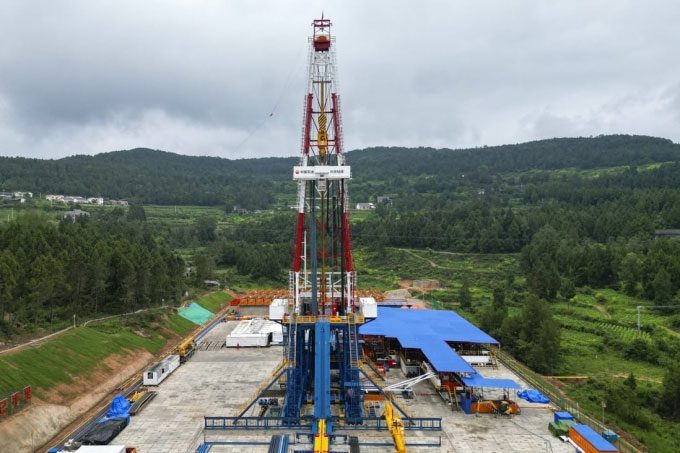Southwest PetroChina Oil and Gas Company commenced drilling the Shendi Chuanke-1 well in the Sichuan Basin at a designed depth of 10,520 meters on July 20.

China begins drilling a well deeper than 10,000m in Sichuan on July 20. (Photo: Xinhua)
Wells deeper than 9,000 meters are known as ultra-deep wells. Undertaking such drilling projects is considered one of the greatest technical challenges in the oil and gas engineering sector. Shendi Chuanke-1 is part of the Deep Earth ultra-deep drilling project, which provides essential support and a foundation for the future development of China’s oil and gas resources and scientific research.
Shendi Chuanke-1 is located in Sichuan, an area known for some of the largest shale gas reserves in China. This will be the second ultra-deep well in China. The first project, Yuejin 3-3, is the deepest oil well in Asia, which began operations in the Tarim Basin, Xinjiang Uygur Autonomous Region, on May 30.
Since 2021, China has become the fourth largest natural gas producer in the world, with its natural gas supply now surpassing that of oil. Under its current five-year plan, China aims to provide more energy to meet its needs by 2025 while also supporting the increase of domestic oil and gas production and collaborating with other countries on clean energy initiatives.
The project team also aims to gather geological information at depths of 10,000 meters to update theories on hydrocarbon accumulation and to build a high-quality international engineering team in China, according to project deputy manager Ding Wei. “The 10,000-meter exploration project is a major national initiative, comparable to the lunar exploration project,” Ding stated.
Engineers will face enormous challenges during the drilling process due to extremely difficult underground conditions, such as complex geological structures and extremely high temperatures at a depth of 10,000 meters. At this depth, temperatures reaching 224 degrees Celsius can make metal drilling tools “soft as noodles,” and the ultra-high pressure environment, reaching 138 MegaPascals, is akin to “diving to a depth of 13,800 meters, far exceeding the seawater pressure at the Mariana Trench, the deepest ocean trench on the planet,” according to chief engineer Yang Yu.


















































